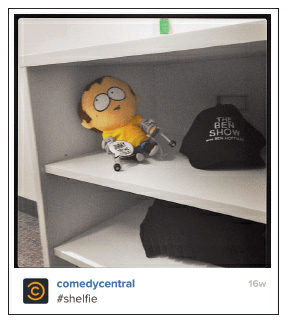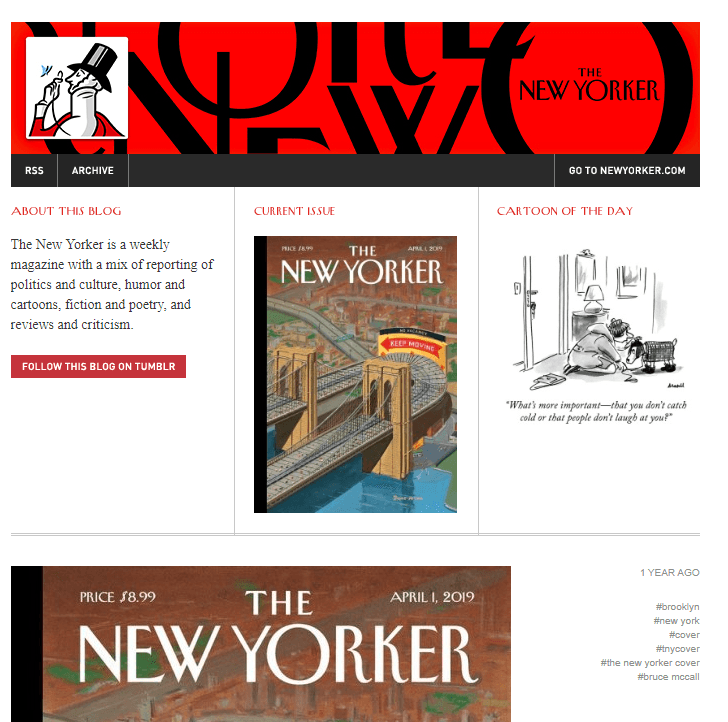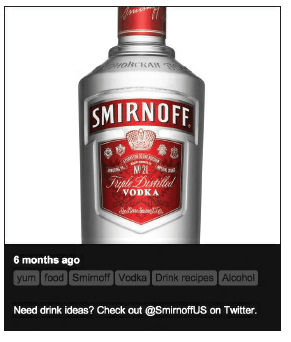PDF Summary:Jab, Jab, Jab, Right Hook, by Gary Vaynerchuk
Book Summary: Learn the key points in minutes.
Below is a preview of the Shortform book summary of Jab, Jab, Jab, Right Hook by Gary Vaynerchuk. Read the full comprehensive summary at Shortform.
1-Page PDF Summary of Jab, Jab, Jab, Right Hook
In Jab, Jab, Jab, Right Hook, marketing expert Gary Vaynerchuk calls on the sport of boxing to illustrate how to create striking social media content. “Jabs” are interactions that build relationships with your customers and should be thrown far more often than “right hooks,” which are calls to action.
Vaynerchuk explains how to tailor your jabs and hooks for five major platforms (Facebook, Twitter, Pinterest, Instagram, and Tumblr), how social media marketing is different than any type of marketing that’s come before it, and how small businesses can successfully compete with large ones in the social media arena.
(continued)...
- For example, include your logo or slogan on the images you post on Facebook.
7. Cross-pollinate. If you have a good following on one platform, use it to advertise your presence on a platform where your following is smaller.
- For example, Surf Taco has a Twitter following that’s almost 13 times larger than its Instagram following, and on Twitter, they linked to an Instagram photo.
8. Don’t interrupt. Don’t use banner ads or pop-ups, which are highly interruptive. When you interrupt someone from their media with an ad, at best they’re annoyed, at worst, they now hate your brand.
Specific Platforms
While there are some techniques that apply to any social media platform, each platform has its own features, and native content looks different on all of them. Jab, Jab, Jab, Right Hook covers how to create platform-specific content for five major social media platforms:
Facebook is a social media site that allows users to share text, photos, and videos with their network. As of December 2012, there were over a billion monthly active Facebook users. People use Facebook to find out what people they know are doing and socialize.
Notable Features
- Advanced analytics. Studying Facebook’s analytics can tell you a lot about the human psyche, and you can use this data to make your content more effective.
- Huge amount of content. Part of the reason Facebook is such a good marketing tool is that there are so many people on it, but all of these people create content yours has to compete with.
- Free targeting functionality. Facebook offers settings that allow you to make certain posts visible to only a certain demographic, which is ideal for right hook posts.
- Use of curating algorithms. Facebook doesn’t want users to see posts they’re not interested in (because if they get bored they’ll leave the site), so Facebook uses algorithms to curate people’s News Feeds. Only 3-5% of your content shows up on your fans’ News Feeds organically (“organically” means if no one shares the story or you don’t pay to make it more visible.)
- Paid advertising. Facebook has two types of ads, and the most effective is sponsored stories. A sponsored story is a post that will be visible to non-followers and more than 3-5% of your fans’ News Feeds.
Three Tips for Great Facebook Content
- Choose the correct format. On Facebook, you can create a link-based post, which shows a small photo beside the link, or a photo-based post, which prioritizes the photo. If you have a nice photo, choose the photo-based post.
- Optimize for mobile. More people than ever are accessing Facebook sites on mobile devices, so make sure text on your images is legible at small sizes and not cut off if cropped by the smaller mobile screen.
- Regulate the comments section. Many people try to piggyback on popular fan pages to sell their own products or business, which is content that people aren’t interested in, so you need to remove it. You also need to respond to people’s comments and questions.
Twitter is a microblogging platform and posts are called “tweets.” As of December 2012, there were 500 million Twitter users worldwide, and most users were young and urban. People mainly use Twitter to share information and news.
Notable Features
- Mobile-friendly. Twitter is one of the most mobile-friendly platforms.
- Very public. Most tweets are public to the entire internet, even to people who don’t have accounts.
- Huge potential for community engagement. Unlike other platforms where you can only talk to people who are already following you, on Twitter, you can initiate conversations with potential new customers.
- Retweeting features. On Twitter, you can retweet (reshare) other people’s tweets. This allows you to rework other people’s content instead of having to come up with your own.
- The importance of context over content. Like Facebook, there’s an overwhelming amount of content on Twitter and if you’re only tweeting about your products, you’re not going to stand out. You can stand out by putting your own spin on the news and augmenting the existing content with commentary, humor, or voice.
- Trend-tracking features. Trends are words, topics, and hashtags that are popular at any given moment. You can use settings to track trends (at levels ranging from regional to worldwide) and then use that knowledge to post timely content with appropriate context.
- Paid advertising. On Twitter, you can advertise via a promoted tweet. Promoted tweets are clearly labeled “Promoted” and are given more visibility than other tweets.
Four Tips for Great Twitter Content
- Use memorable and idiosyncratic hashtags. Hashtags should match the voice of your brand. Additionally, they should be native to Twitter (they should be employed the same way users employ them).
- Pay attention to voice. Your voice should sound like your brand and be appropriate to the Twitter audience (which tends to enjoy irony).
- Break the news first. If you can release news people are interested in before anyone else does, it’ll be your tweet that’s reshared as the news goes around.
- Trendjack. Trendjack refers to using hashtags that are trending to boost the visibility of your tweet. Twitter users regularly look through the list of posts that use the trending hashtags, and if you use a trend, your tweets are more likely to be seen by people outside your existing network.
Pinterest is a social bookmarking site that allows people to save posts they like (“pins”) into collections (“boards”). At the author’s time of writing, Pinterest had 48.7 million users, many of whom were women and mothers. People use Pinterest because it’s aspirational—people pin images of what they’d like their lives to look like, not actually what they are.
Notable Features
- Purchase-friendly. A Steelhouse study found that users are almost 80% more likely to buy something they see on Pinterest than on Facebook. Twitter produces only a quarter of the revenue-per-click of Pinterest.
- Distinction between boards and brand pages. People can follow your collections separately from your brand, so you have more freedom to explore your brand’s identity.
- Caption features. You can accompany all your images with custom captions or descriptions.
- Repinning features. Like Twitter, you can reuse and upcycle other people’s content. This might not help you make sales, but it’s good for building relationships and establishing trust.
- Rabbitholing opportunities. Most people on Pinterest don’t go directly to a brand’s page; they arrive there by clicking on images they’re interested in that eventually lead to the page. People have the potential to end up on your brand page no matter what board they initially started at.
Three Tips for Great Pinterest Content
- Post aspirational images. People go on Pinterest to imagine what their lives could be like, so post images of luxury, beauty, and fun. Ask yourself if the image in the pin is high-quality enough to be printed in a magazine. If it isn’t, don’t post it.
- Give your boards and photos good titles and descriptions and categorize images so people don’t have to debate where to repin. A good filing system will help people find and interact with your pins.
- Use infographics. Infographics are popular and create engagement.
Instagram is a photo and video-sharing social media platform that’s owned by Facebook. Instagram is used by younger demographics and as of December 2012, there were 130 million monthly active users. People like Instagram because they like interacting with others visually.
Notable Features
- No reposting. You can only post your own content, not reshare other people’s. However, you can get around this by using outside apps, or by screenshotting a post and then posting the screenshot.
- No linking. Posts can’t be linked to outside sites. However, you can get around this by putting a URL into the photo’s description.
- Integration with other social media platforms. Users can connect their Instagram accounts to Twitter and Facebook.
- “Baked-in utility.” Baked-in utility means a platform is good at what it’s designed to do. Instagram is designed to help users take good smartphone photos.
- Explore. Explore is an Instagram page that features the best content on the site. If you can get your content featured on Explore, its visibility increases exponentially—everyone, not just your followers, will see it.
Four Tips for Great Instagram Content
- Use hashtags freely. On Twitter, hashtags are used sparingly for humor and irony, but on Instagram, use as many as you want because they’re how people find your posts (clicking on a hashtag brings users to a page of all the images that use that hashtag).
- Cater to the younger generations. Many people on Instagram are young.
- Create holiday-themed content. Holiday-themed photos tend to create engagement because they evoke excitement and nostalgia.
- Pay attention to placement. For instance, if your image has a heart in it, crop the image so that the heart of the “like” button lines up with it.
Tumblr
Tumblr was originally a blogging platform, but in January 2012 it redesigned its dashboard to become more social. Tumblr is mainly used by 18-to-34-year-olds and had 132 million monthly users as of June 2013. Tumblr is more of a publishing platform than a consuming one, but people do consume media on it, and quickly.
Notable Features
- Customizable homepage. Unlike Twitter or Facebook, you can choose your art, logo placement, color, format, and font, which allows you to better express your brand’s identity.
- Interest-based connections. Connections are made based on interest, not who you already know. If you post content people are interested in and tag it appropriately, they’ll find it, whether or not they follow you.
- GIF support. GIFs are soundless videos that play on a loop without having to be clicked. They’re both animated and live-action and often captioned. (Shortform note: In 2013, when Jab, Jab, Jab, Right Hook was published, Tumblr was the only platform that supported GIFs. Today, most of the platforms listed in this summary support them too.)
- Relatively new. Fewer businesses are on Tumblr than other platforms, so you have a chance to corner the market before your competitors arrive.
Four Tips for Great Tumblr Content
- Customize your homepage to showcase your brand identity. You can use the same fonts and colors as your logo.
- Use GIFs. GIFs are engaging and can be used to make people laugh.
- Be cool. Tumblr’s audience is young, cool, and interested in exclusive content. Consider black and white images and pop culture references.
- Use appropriate tags. Tags help people find your posts, so choose specific ones.
Want to learn the rest of Jab, Jab, Jab, Right Hook in 21 minutes?
Unlock the full book summary of Jab, Jab, Jab, Right Hook by signing up for Shortform.
Shortform summaries help you learn 10x faster by:
- Being 100% comprehensive: you learn the most important points in the book
- Cutting out the fluff: you don't spend your time wondering what the author's point is.
- Interactive exercises: apply the book's ideas to your own life with our educators' guidance.
Here's a preview of the rest of Shortform's Jab, Jab, Jab, Right Hook PDF summary:
PDF Summary Chapter 1: The Social Media Arena
...
Skepticism and the Early Adoption Advantage
In spite of the fact that social media is where the population’s attention is focused, most businesses and marketers don’t take advantage of it, especially new platforms. There are several reasons for this:
- They think social media doesn’t matter.
- They don’t understand it.
- They think it’s a fad that will soon die out.
- They don’t think it works. (It can take a while for the analytics to show results.)
- They’re scared of making a mistake or starting a lawsuit.
- For example, Pinterest encourages users to share images they don’t own.
- They don’t have time.
Even once marketers create a presence on one platform (often Facebook because it has such a large audience), they don’t necessarily respect other platforms. Most marketers respond to a new platform like this: Once they hear about it, they spend only a few minutes exploring. The moment they find something low-brow that makes them think the platform’s a waste of time—for example, a nonsensical post about how someone likes ketchup—they abandon it.
**Because of this reluctance to embrace social media, you and your brand don’t face a lot of...
PDF Summary Chapter 2: Creating Great Content
...
Today, however, if you interrupt people, you’re doomed, because people’s expectations have changed. People have more control over what advertising they see now—pop-up blockers and commercial-skipping devices abound—and being forced to look at your ad at best annoys someone and at worst makes them hate your brand. In particular, don’t use mobile banner ads, which are a huge interruption because they block almost the whole mobile screen (and they’re overpriced).
To avoid interrupting people, your content needs to:
- Include more jabs than hooks.
- Be native. Ads need to be just as entertaining or informative as a regular post so that they don’t annoy people or break the spell of the social media experience.
- Offer something of value, such as a joke that brightens a user’s day.
Rule #3: Tailor Your Jabs to the Customer’s Desires
Leo Burnett, an expert advertiser, said that good content should be simple, memorable, inviting, and fun. The author adds that good content should also be aimed at meeting your audience’s goals, not yours. Right hooks are about your company, but jabs are all about the customer.
How do you find out what the customer wants? Consider...
PDF Summary Chapter 3: How to Best Use Facebook
...
Feature #4: Use of curating algorithms. Facebook doesn’t want users to see posts they’re not interested in (because if they get bored they’ll leave the site), so Facebook uses algorithms to curate people’s News Feeds.
- For example, even if someone already likes your brand page, they won’t necessarily see your posts. Only 3-5% of your content shows up on your fans’ News Feeds organically (showing up “organically” happens when no one shares the story or you don’t pay to make it more visible.) As a result, if you want to reach a larger audience, you have to either pay or create content that’s engaging enough to be shared.
EdgeRank
EdgeRank is a Facebook algorithm. (Shortform note: EdgeRank hasn’t been in use since 2011, but we’ll discuss how it works as an example of how algorithms can affect post visibility. For more recent information on Facebook’s algorithms, read this Hootsuite blog post.)
EdgeRank tracks users’ engagement with content (liking, sharing, commenting, and following posted links). When there’s a lot of engagement with a particular type of content, EdgeRank shows the users similar content....
What Our Readers Say
This is the best summary of Jab, Jab, Jab, Right Hook I've ever read. I learned all the main points in just 20 minutes.
Learn more about our summaries →PDF Summary Chapter 4: How to Best Use Twitter
...
Feature #5: Retweeting features. On Twitter, you can retweet (reshare) other people’s tweets. This allows you to rework other people’s content instead of having to come up with your own.
Feature #6: The importance of context over content. Like Facebook, there’s an overwhelming amount of content on Twitter, and if you’re only tweeting about your products, you’re not going to stand out. You can stand out by putting your own spin on the news and augmenting existing content with commentary, humor, or voice. People want escapism and entertainment—information that’s also entertaining.
- For example, say you run a bookstore. When a newspaper releases a review of a book you sell, you might tweet a sentence along the lines of, “Check out this review of The Italian Pig from The New York Times” and include the link to the review. Or, you could write something like, “The New York Times loves it. We hate it. Find out why.” This tweet would be linked to your blog, which would have the full text of the review and your thoughts on it. (The author writes that criticizing something he sold never hurt his sales when he was in the wine business; in fact, it made people trust...
PDF Summary Chapter 5: How to Best Use Pinterest
...
Feature #3: Support for comments. Comments are a new Pinterest feature that not many people are taking advantage of yet (as of 2013), so if you start using them, you’ll stand out. Like you would on Twitter, talk to people about their interests. Whenever you engage, you encourage people to look at your brand page to learn about you.
Feature #4: Support for captions. You can accompany all your images with custom captions or descriptions.
- For example, if you sell coffee and you caption a photo “Morning-after coffee saves the day again,” the caption might encourage people to comment on what they got up to on Friday night. This will encourage people to repin your posts onto their own boards, where more people will see them.
Feature #5: Repinning functionality. Like Twitter, you can reuse and upcycle other people’s content. This might not help you make sales, but it’s good for building relationships and establishing trust.
- For example, a coffee company might create a board called “Coffee Accessories” and repin a photo of a coffee pot with a short review of it.
Feature #6: Rabbitholing opportunities. Most people on Pinterest don’t go directly to a...
PDF Summary Chapter 6: How to Best Use Instagram
...
Tips for Creating Good Instagram Content
To create effective and engaging Instagram content, use the following tips:
Tip #1: Use hashtags freely. On Twitter, hashtags are used sparingly for humor and irony, but on Instagram, use as many as you want because they’re how people find your posts (clicking on a hashtag brings users to a page of all the images that use that hashtag). You can place the hashtags in either the photo description or a comment on the photo.
- Example of good content: Comedy Central shared a photo of some of their merchandise on a shelf and included the hashtag #shelfie, which is a pun on the popular #selfie tag.

Tip #2: Cater to the younger generations. Many people on Instagram are young.
- (Shortform example of good content: CosmoGirl! Magazine posted celebrity gossip about a popular actress in a high-school TV show.)

Tip #3: Create holiday-themed content. Holiday-themed photos tend to create engagement because they evoke excitement and nostalgia.
- Example of bad...
PDF Summary Chapter 7: How to Best Use Tumblr
...
Tips for Creating Good Tumblr Content
To create effective and engaging Tumblr content, use the following tips:
Tip #1: Customize your homepage to showcase your brand identity.
- (Shortform example of good content: The New Yorker’s homepage uses its iconic font and cartoons to show off its identity.)

Tip #2: Use GIFs. GIFs are popular with Tumblr users, so if you use them too, your content will be more native and interesting.
- Example of bad content: Smirnoff posted a boring, still product photo of a Smirnoff bottle.

- Example of good content: NPR’s Fresh Air talk show posted a GIF of a scene from A Room with a View to commemorate the death of the screenplay writer.
Tip #3: Be cool. Tumblr’s audience is young, cool, and interested in exclusive content.
- Example of good content: Life magazine posted a never-before-seen image of Marlon Brando on his birthday....
PDF Summary Chapter 8: Up-and-Coming Platforms
...
Who uses it: Early tech influencers use Google+. Few other people use it because it’s so similar to Facebook.
Why they use it: Early tech influencers are on Google+ because they hope it might take off.
Notable Features
Google+ has several features:
- Higher-ranked search results. Google’s search prioritizes its own products, so your Google+ marketing will come up higher in a search than posts on other platforms.
- Google Glass features. If Google Glass replaces mobile phones, Google could make Google+ the only platform on which Glass content could be viewed and shared.
Vine
Vine is a platform for sharing six-second looping videos. At the time the book was published, Vine had just come out and was too new for the author to have a lot of advice about it.
The audience: Vine had 13 million users as of June 2013, six months after it was launched.
Who uses it: Vine is popular with 8-to-21-year-olds. The author predicts the demographic will expand.
Why they use it: Vine provides a variety of content, and the content is short so people don’t feel like they’re going to get sucked in.
Notable...
Why are Shortform Summaries the Best?
We're the most efficient way to learn the most useful ideas from a book.
Cuts Out the Fluff
Ever feel a book rambles on, giving anecdotes that aren't useful? Often get frustrated by an author who doesn't get to the point?
We cut out the fluff, keeping only the most useful examples and ideas. We also re-organize books for clarity, putting the most important principles first, so you can learn faster.
Always Comprehensive
Other summaries give you just a highlight of some of the ideas in a book. We find these too vague to be satisfying.
At Shortform, we want to cover every point worth knowing in the book. Learn nuances, key examples, and critical details on how to apply the ideas.
3 Different Levels of Detail
You want different levels of detail at different times. That's why every book is summarized in three lengths:
1) Paragraph to get the gist
2) 1-page summary, to get the main takeaways
3) Full comprehensive summary and analysis, containing every useful point and example